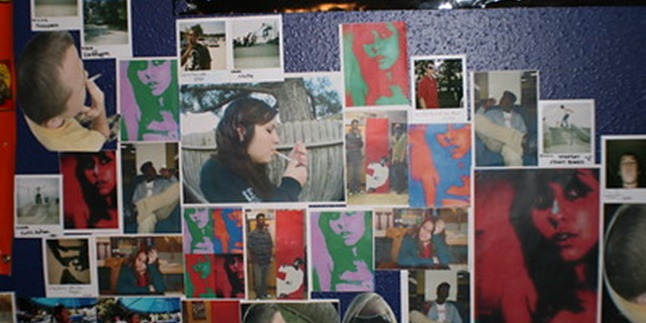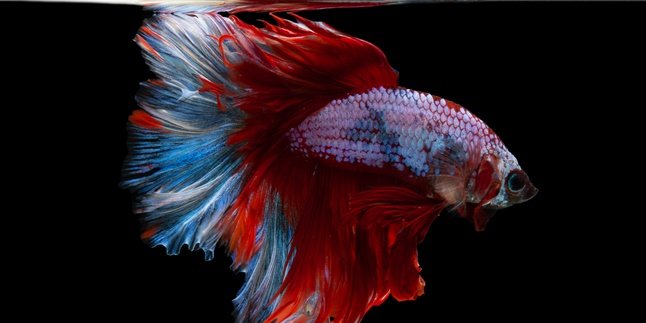Kapanlagi.com - Creating artwork can be a fun activity. There are many artworks that can be created easily but still beautiful, one of them is montage. In general, montage is an art work created by attaching many images in one frame. Although it sounds simple, making a montage cannot be done carelessly.
Montage is an art work that can be easily created by anyone. This makes montage suitable as an activity in leisure time with family or friends. Although it seems simple, if made wholeheartedly, montage will produce beautiful and amazing works. In fact, when made wholeheartedly, montage is not only beautiful, but also meaningful.
So, how do you make a montage look beautiful? Summarized from various sources, here is a review of montage as the art of combining many images.
1. The Definition of Montage

(credit: flickr)
As mentioned earlier, montage is an art form created by combining several images in one frame by pasting them together. Therefore, this art is also often referred to as collage.
The artistic value in montage lies in our ability to place or combine images. So that it appears beautiful, even meaningful. Montage can be made using various materials, such as newspapers, magazines, brochures, books, and so on.
However, lately montage is not only known as the art of sticking many pictures in one frame. Montage is also known in the world of photography and cinematography. In photography, montage is better known as photomontage. This means that montage is a form of image modification, both analog and digital. Meanwhile, in the world of cinematography, montage is a series of unmoving images.
2. The Origin of Montage

(credit: flickr)
Montage is one of the popular and beloved forms of art today. However, it turns out that montage is not a new art that has recently emerged. On the contrary, montage has a quite long history.
As reported from dream.co.id, the art of montage was first known since 1923. A Russian filmmaker, Sergei Eisenstein, was the person who formulated the theory of montage for the first time. Sergei Eisenstein applied montage in his films titled Glumov's Diary (1923) and The Battleship Potemkin (1925).
Sergei Eisenstein, who had a background in theater, had a high artistic ability. He tried to translate Griffith's and Karl Marx's thoughts into the viewer's experience. From there, Eisenstein developed a theory about film editing as a clash of images and ideas.
Continuing in 1929, Eisenstein explained his theory about the attraction of montage through an essay titled 'Beyond the Shot'. Eisenstein also compared montage to Japanese hieroglyphs. Eisenstein successfully proved that two symbols could be combined to produce a new meaning.
Along with its development, montage can now be applied in various media, not only in films but also in pictures and photography.
3. Function of Montage
Montage is an art that can be created by combining several images in one frame, to make it look beautiful and harmonious. Not just art, montage apparently has several functions. What are they?
1. The expression function of montage is the technique of combining images from various materials and textures to form an expression.
2. The educational function of montage is one way to develop thinking, absorption, emotions, aesthetics, and creativity.
3. The psychological function of montage is to indirectly express ideas and emotions through a work. In this way, satisfaction and happiness will have a positive psychological impact.
4. The social function of montage can create job opportunities based on creativity to produce unique and interesting works.
5. The practical function of montage is the function of utilizing everyday objects to be used as works, so that they can be used for decoration.
4. How to Make a Simple and Practical Montage

(credit: flickr)
Montage is an art that can be easily and practically made manually. Moreover, montages can be made by utilizing materials that are easily found around us. Here are some ways to make a simple montage manually.
1. First, prepare the materials that will be used to make the montage.
2. Second, prepare the tools, such as scissors, glue, colored pencils, HVS paper, and a sketchbook.
3. Determine the theme that will be raised in the art of montage.
4. Sort and collect images from the available materials. Choose those that are suitable for the theme.
5. Choose images that have meaning as much as possible.
6. Cut the images using scissors, then glue them onto a piece of paper. Use your creativity to create a beautiful and meaningful montage.
7. Add shading with crayons or colored pencils.
8. Pay attention to the result of your montage, make sure if there are parts that are still lacking and can be improved. If not, it means that the montage is done and can be displayed as decoration.
Those are some reviews about montage, which is an art that combines many images. So, are you interested in trying to make one?
(kpl/psp)
Disclaimer: This translation from Bahasa Indonesia to English has been generated by Artificial Intelligence.















